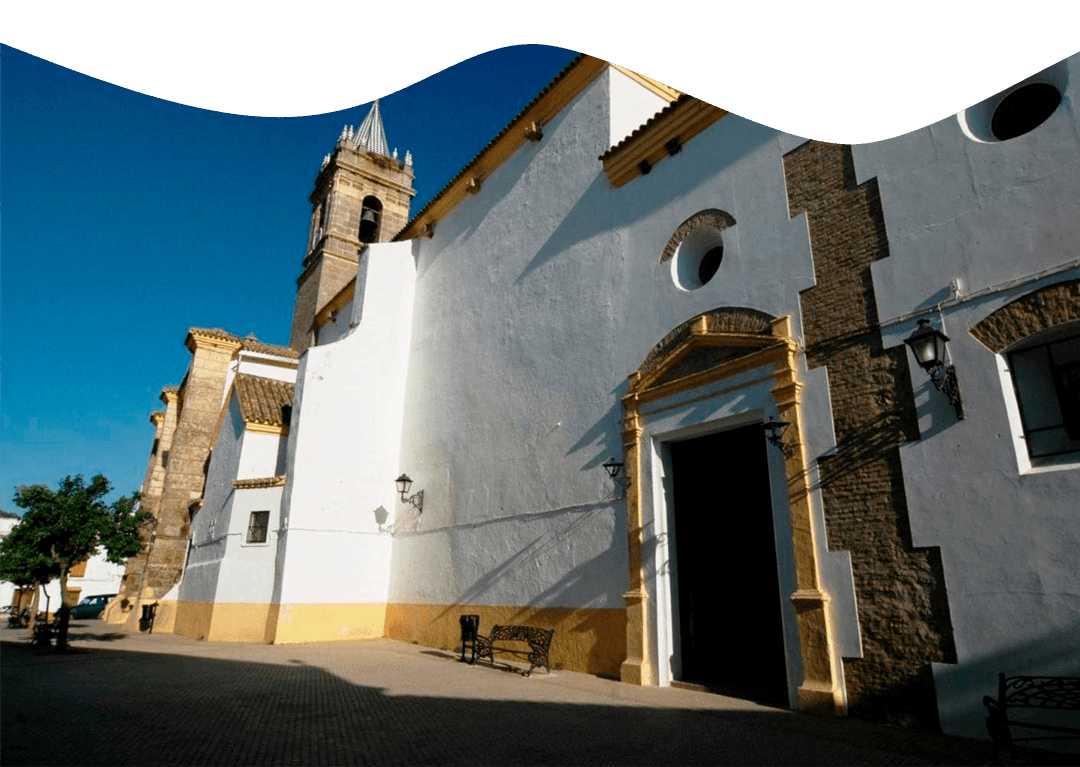



Click play NOW
Sendero circular con una longitud de 11,9 Km que transcurre por el Batolito de El Pedroso, donde se distinguen grandes afloramientos de granito que emergen a la superficie formando bolos conocidos como “Berrocales“. Estos “Berrocales” albergan algunos enterramientos prehistóricos y han inspirado, desde la antigüedad, a los pedroseños en sus historias y leyendas locales, de la que cabe destacar la leyenda de “The Mora Stone” (local legend whose location is at the beginning of the trail).
The trail continues along a forest track leading to different agricultural farms to then reach the Cañas stream, where you can enjoy well-preserved pastures where, in addition to large livestock farms dedicated to the Iberian Pig, you can see raptors.
We will continue next to the Oil Mill through the Almadén road.
Durante los primeros kilómetros verás un paisaje de dehesas salpicadas de batolitos de granito o “porrilla” como se conoce aquí.
This section is divided into small family farms dedicated to extensive cattle and sheep farming.
The Arroyo de las Cañas Route is a unique experience in which you will enjoy the natural beauty of the environment. During the route you will be able to explore impressive landscapes, discover native fauna and flora and breathe fresh air while immersing yourself in nature. This experience will allow you to disconnect from your routine and connect with yourself, enjoying a day of adventure and fun in a privileged environment.
It is about 2 km from the start. The El Pedroso granite quarry has a long history that dates back to the 18th century, when granite began to be exploited in the area. During the 19th and 20th centuries, the quarry experienced a great boom, thanks to the growing demand for construction materials. In the 60s and 70s, the quarry was modernized and more advanced machinery and extraction techniques were introduced, which allowed it to increase its production and improve the quality of its granite.
Furthermore, its natural beauty and its tourist interest make it a place visited by numerous tourists and fans of geology and mining.
After about 3 km you will find the first crossing, which you will continue straight ahead, and after about 300 m, after passing through a more tortuous section, you will enter the Dehesa de Barbosa through a gate located in an old stone wall. You will travel through here for 3 km.
This estate is dedicated to forestry and livestock exploitation. The Cortijo de los Labrados de Barbosa is an architectural complex of great historical and cultural interest located in El Pedroso, Seville. This farmhouse dates back to the 18th century and was originally built as an agricultural and livestock farm. Over the years, the Cortijo de los Labrados de Barbosa has witnessed various historical events, such as the War of Independence or the Spanish Civil War, during which it was used as a center for military operations. Furthermore, this architectural complex is an example of the traditional rural architecture of the area, with its typical central courtyard structure surrounded by buildings and agricultural outbuildings. The Cortijo de los Labrados de Barbosa is a place highly appreciated by tourists and travelers who seek authentic and enriching experiences, and who want to know the history and culture of the area of El Pedroso and the Sierra Norte of Seville.
This pasture has a flat landscape populated with holm oaks and cork oaks, which will accompany you to the shores of its hamlet where you will enter an extensive olive grove.
After about 500 meters, you will come across a large cork oak, perfect for resting from the walk. During the rutting season, it is a perfect place to see and hear the occasional deer at its prime time of the year.
After the break and about 200 meters from the large cork oak, leave the Almadén road and take the Cañas stream to the right and upstream, and continue here for 500 meters along the edge of the olive grove, reaching a crossroads that you will take to the left to ford the stream.
For 1.5 km you will travel straight ahead following the path, with a pasture landscape and accompanied by cows, pigs and sheep, as well as abundant wildlife.
After this section, you will again take a junction to the right to look for the bank of the stream and follow it for 1.5 km, in a terrain full of wild animals and with a little luck you will be able to spot the otter or see the Kingfisher fishing.
After this part, you will reach the Navahonda road, which you will take to the right, crossing the stream again and seeing a huge granite stone about 100 meters away.
This is where the last 2 kilometers begin, continuing to the right along the Cazalla-Cantillana livestock route, arriving at El Pedroso, where its patron saint will receive us in the Hermitage of the Virgen del Espino.
The Virgin came to the municipality through the transhumance of the shepherds from Soria.
It is a building with a single nave with 4 sections and wide span transverse arches similar to other mountain buildings.
See here more details about the Hermitage
Legend has it that at the time of the reconquest, the Almohad king An-Nasir* stayed in the Kura of Firrish* during one of his advances to attack the troops of Tolosa.
The king, along with his chariots and infantry, traveled accompanied by a harem of beautiful Moorish and Christian women, displaying his power wherever he went. One day, a young Christian merchant named Thomas was trying to sell some bread and spices when suddenly he was approached by the most beautiful woman his eyes had ever seen, a Bedouin from the King's harem named Zarha, who always accompanied him on his visits to the souk.
Over time they both fell in love and decided that they only had one chance to live their love; escape before King An-Nasir left the Kura and remain hidden. On a night with a full moon, they orchestrated their escape to the mountains until they found shelter in a natural cave, formed between large stones that emerged from the ground, where they held out for weeks with the only hope of not being found. During this time the King used all his power to hunt them down, waiting for the slightest mistake to find them. One spring morning while searching for food near a stream, Tomás was captured by the army. Imesebelem*, guardians of the harem, and was never seen again, leaving Zahra heartbroken.
After long years of waiting, Zahra went crazy trying to bring Tomás back using ancestral magic spells, until one of them gave up her life to reunite with him. That is why according to legend, all September 8th, a morning star next to a halo of moonlight, kiss the “Mora Stone” and when they both coincide, illuminating the entrance to the cave, the souls of Zahra and Tomás meet for a few moments, right there, giving the people hope for their eternal love.
*Muhammad An-Nasir: Fourth caliph of the Almohad dynasty (1199-1213) defeated on July 16, 1212 by the Christians in the battle of Las Navas de Tolosa.
*Kura de Firrish: Arab region to which El Pedroso belonged, whose capital Firrish is located in the municipality of San Nicolás del Puerto, on the Armada hill.
*Imesebelen: Army of black soldiers who fought alongside the Muslims. They were also known as “Black Guard” or “dispossessed.”
Click the button to download the PDF of the trail:
Download PDF of the Arroyo de las Cañas Trail
Also for more information, see this Wikiloc link:
CIF: P4107300H
Telephone: 954 88 90 01
Fax: 954 88 93 13

El Pedroso 2022. All rights reserved © Nattule. Web development NattuAR.
We firmly believe that the internet should be available and accessible to anyone, and are committed to providing a website that is accessible to the widest possible audience, regardless of circumstance and ability.
To fulfill this, we aim to adhere as strictly as possible to the World Wide Web Consortium's (W3C) Web Content Accessibility Guidelines 2.1 (WCAG 2.1) at the AA level. These guidelines explain how to make web content accessible to people with a wide array of disabilities. Complying with those guidelines helps us ensure that the website is accessible to all people: blind people, people with motor impairments, visual impairment, cognitive disabilities, and more.
This website uses various technologies that are meant to make it as accessible as possible at all times. We use an accessibility interface that allows persons with specific disabilities to adjust the website's UI (user interface) and design it to their personal needs.
Additionally, the website uses an AI-based application that runs in the background and optimizes its accessibility level constantly. This application remediates the website's HTML, adapts Its functionality and behavior for screen-readers used by the blind users, and for keyboard functions used by individuals with motor impairments.
If you've found a malfunction or have ideas for improvement, we'll be happy to hear from you. You can reach out to the website's operators by using the following email
Our website implements the ARIA attributes (Accessible Rich Internet Applications) technique, alongside various different behavioral changes, to ensure blind users visiting with screen-readers are able to read, understand, and enjoy the website's functions. As soon as a user with a screen-reader enters your site, they immediately receive a prompt to enter the Screen-Reader Profile so they can browse and operate your site effectively. Here's how our website covers some of the most important screen-reader requirements, alongside console screenshots of code examples:
Screen-reader optimization: We run a background process that learns the website's components from top to bottom, to ensure ongoing compliance even when updating the website. In this process, we provide screen-readers with meaningful data using the ARIA set of attributes. For example, we provide accurate form labels; descriptions for actionable icons (social media icons, search icons, cart icons, etc.); validation guidance for form inputs; element roles such as buttons, menus, modal dialogues (popups), and others. Additionally, the background process scans all of the website's images and provides an accurate and meaningful image-object-recognition-based description as an ALT (alternate text) tag for images that are not described. It will also extract texts that are embedded within the image, using an OCR (optical character recognition) technology. To turn on screen-reader adjustments at any time, users need only to press the Alt+1 keyboard combination. Screen-reader users also get automatic announcements to turn the Screen-reader mode on as soon as they enter the website.
These adjustments are compatible with all popular screen readers, including JAWS and NVDA.
Keyboard navigation optimization: The background process also adjusts the website's HTML, and adds various behaviors using JavaScript code to make the website operable by the keyboard. This includes the ability to navigate the website using the Tab and Shift+Tab keys, operate dropdowns with the arrow keys, close them with Esc, trigger buttons and links using the Enter key, navigate between radio and checkbox elements using the arrow keys, and fill them in with the Spacebar or Enter key. Additionally, keyboard users will find quick-navigation and content-skip menus, available at any time by clicking Alt+1, or as the first elements of the site while navigating with the keyboard. The background process also handles triggered popups by moving the keyboard focus towards them as soon as they appear, and not allowing the focus to drift outside of it.
Users can also use shortcuts such as “M” (menus), “H” (headings), “F” (forms), “B” (buttons), and “G” (graphics) to jump to specific elements.
We aim to support the widest array of browsers and assistive technologies as possible, so our users can choose the best fitting tools for them, with as few limitations as possible. Therefore, we have worked very hard to be able to support all major systems that comprise over 95% of the user market share including Google Chrome, Mozilla Firefox, Apple Safari, Opera and Microsoft Edge, JAWS and NVDA (screen readers), both for Windows and for MAC users.
Despite our very best efforts to allow anyone to adjust the website to their needs, there may still be pages or sections that are not fully accessible, are in the process of becoming accessible, or are lacking an adequate technological solution to make them accessible. Still, we are continually improving our accessibility, adding, updating and improving its options and features, and developing and adopting new technologies. All this is meant to reach the optimal level of accessibility, following technological advancements. For any assistance, please reach out to